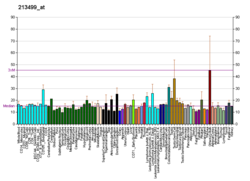| CLCN2 | |||||||||||||||||||||||||||||||||||||||||||||||||||
|---|---|---|---|---|---|---|---|---|---|---|---|---|---|---|---|---|---|---|---|---|---|---|---|---|---|---|---|---|---|---|---|---|---|---|---|---|---|---|---|---|---|---|---|---|---|---|---|---|---|---|---|
| Identifiers | |||||||||||||||||||||||||||||||||||||||||||||||||||
| Aliases | CLCN2 , CIC-2, CLC2, ECA2, ECA3, EGI11, EGI3, EGMA, EJM6, EJM8, LKPAT, clC-2, chloride voltage-gated channel 2, HALD2 | ||||||||||||||||||||||||||||||||||||||||||||||||||
| External IDs | OMIM: 600570; MGI: 105061; HomoloGene: 3213; GeneCards: CLCN2; OMA:CLCN2 - orthologs | ||||||||||||||||||||||||||||||||||||||||||||||||||
| |||||||||||||||||||||||||||||||||||||||||||||||||||
| |||||||||||||||||||||||||||||||||||||||||||||||||||
| |||||||||||||||||||||||||||||||||||||||||||||||||||
| |||||||||||||||||||||||||||||||||||||||||||||||||||
| Wikidata | |||||||||||||||||||||||||||||||||||||||||||||||||||
| |||||||||||||||||||||||||||||||||||||||||||||||||||
Chloride channel protein 2 is a protein that in humans is encoded by the CLCN2 gene. [5] [6] Mutations of this gene have been found to cause leukoencephalopathy [7] and Idiopathic generalised epilepsy (OMIM: 600699), [8] although the latter claim has been disputed. [9]
Contents
A gain of function mutation in the CLCN2 gene was found to cause primary aldosteronism, [10] a form of arterial hypertension due to excessive production of aldosterone by the neuroendocrine cells of the zona glomerulosa of the adrenal gland. The mutation was found to cause a chloride leak in these cells and increased the expression of aldosterone synthase. [11]
CLCN2 contains a transmembrane region that is involved in chloride ion transport as well two intracellular copies of the CBS domain.




